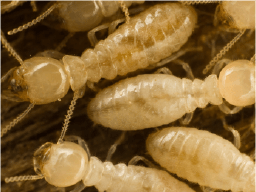Carpenter Bees: What You Need to Know
Need to get rid of carpenter bees? Read on to learn the answers to all of your important questions. Need help? Call our professionals today to get started.
Schedule Today!
What Are the Common Types of Carpenter Bees in the United States?
You may have heard a lot about bees and their sudden disappearance in the United States over the past few years. If you are worried about an infestation, you might also be worried about how to get rid of bees while not having any ecological impact.
There are more than 20,000 species of bees in the world. They’ve been found in fossils dating back 100,000 years. They are an integral part of the earth’s ecology and are essential for pollinating plants including those in your yard and garden as well as the plants in the agricultural crops that feed us. Not all bees are beneficial bees, however. Carpenter bees are different from honey bees or bumblebees and can do damage to your home if left untreated.
What Are Carpenter Bees And How Are They Different From Other Bees?
Carpenter bees are named for their nesting behavior. Unlike honey bees and bumblebees, carpenter bees burrow into dead wood material including structural wood in homes and other buildings. They are a similar size to bumblebees at about 1/2 to 1 inch long. Unlike bumblebees which always have fuzzy bands of yellow and black or honey bees who have black heads but a pale yellow central body, carpenter bees can be black, green or purplish. Bumblebees are fluffy and fuzzy and honey bees have furry thoraxes. Carpenter bees have shiny black, hairless abdomens.
Why Should I Be Worried About Carpenter Bees?
All three types of bees are capable of stinging you when threatened, however, you are a lot less likely to be stung by a carpenter bee. The male carpenter bee is unable to sting at all. The female carpenter bee is able to sting, but rarely stings unless she feels threatened
The main reason that carpenter bees differ from other kinds of bees, is also the reason you should be most worried about carpenter bees. While honey bees and bumblebees live in hives, carpenter bees are solitary and don’t create hives. Instead, female carpenter bees burrow into wood to create small chambers where she can lay her eggs. They make nests by tunneling or burrowing into dry wood. While they prefer large branches or dead trees, they will burrow into any old or rotted piece of wood in fencing or houses.
When Should I Call Pest Control for Carpenter Bees?
If you think you have a carpenter bee problem, don’t wait for a full-blown infestation to occur before you take action to protect your home! Let us work with you to make sure your home is safe from stinging pests and other unwanted invaders.
Call Pest Control Experts today to get a free quote and to schedule your home pest inspection as soon as possible!
Call 855-891-5410















